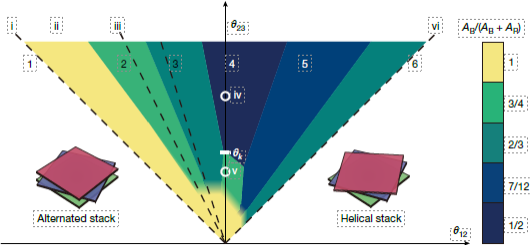First Atomic-scale Identification of Hierarchical Moire Structures in 2D Materials

This study marks the first atomic-level identification of hierarchical structures and complex interlayer interactions resulting from the superposition of different moiré lattices in a trilayer graphene system. While past studies have primarily focused on “single moiré structures” from two stacked layers, stacking three or more layers allows different moiré lattices to form and overlap, resulting in a completely new hierarchical structure known as a “moiré-of-moiré lattice”. The resulting hierarchical lattice patterns and distinctive physical properties manifest exclusively in trilayer and thicker multilayer systems.
To elucidate these structures, the team combined transmission electron microscopy measurements with computational simulations and report a “structural phase diagram” that maps how various domain lattices emerge as a function of twist angle. Because each moiré period can be independently tuned, this configuration greatly enhances the degrees of freedom in controlling electronic states. Despite its potential, the mechanisms behind these multi-moiré structures remain poorly understood. Investigating how such complex structures form and how interlayer interactions govern their behavior is essential for designing more sophisticated electronic systems. The work is expected to offer a promising new solid-state platform for the development of programmable quantum devices and next-generation electronic materials.
